California’s Shasta Cascade and North Coast regions have given me some of the most diverse and jaw-dropping nature experiences I’ve found anywhere in the Golden State.
Honestly, after wandering these wild corners, I’d put them up against any destination for outdoor enthusiasts and nature lovers.
The Shasta Cascade region brings together volcanic peaks, crystal-clear lakes, secret caves, and ancient forests—all with quirky small towns that feel like home base for adventure.
From the looming shadow of Mount Shasta to the rugged coastline where redwoods touch the Pacific, this northern slice of California just hits different.
While exploring, I kept stumbling on reasons to push these regions to the top of any nature lover’s list.
Whether you crave geological oddities, wild waterways, rare ecosystems, or just want to get outside, the Shasta Cascade and North Coast deliver adventures that’ll have you planning your next trip before you even finish the first one.

Iconic Peaks, Volcanoes, and Geological Wonders
Northern California’s Shasta Cascade region puts some wild geological power on full display.
Mount Shasta towers over 14,000 feet as a massive stratovolcano. Meanwhile, Lassen Volcanic National Park simmers with active geothermal features and reminders of ancient eruptions.
Mount Shasta: The Majestic Crown of Northern California
Mount Shasta grabs your attention at 14,179 feet. It’s the Cascade Range’s tallest showstopper, dominating the horizon for what feels like forever.
This mountain grew over thousands of years of volcanic action. I’ve learned that five separate cones make up its gnarly shape.
Key Features:
- Elevation: 14,179 feet
- Prominence: 9,822 feet (5th highest in the lower 48)
- Glaciers: Seven named glaciers
- Last Eruption: Around 1786
That snowy summit stays visible through every season. Thanks to its size, Mount Shasta even makes its own weather, which is kind of wild to witness.
Climbing here? The routes cater to everyone from newbies to serious mountaineers.
Hiking trails surround the area, and Panther Meadows bursts with wildflowers in the summer.
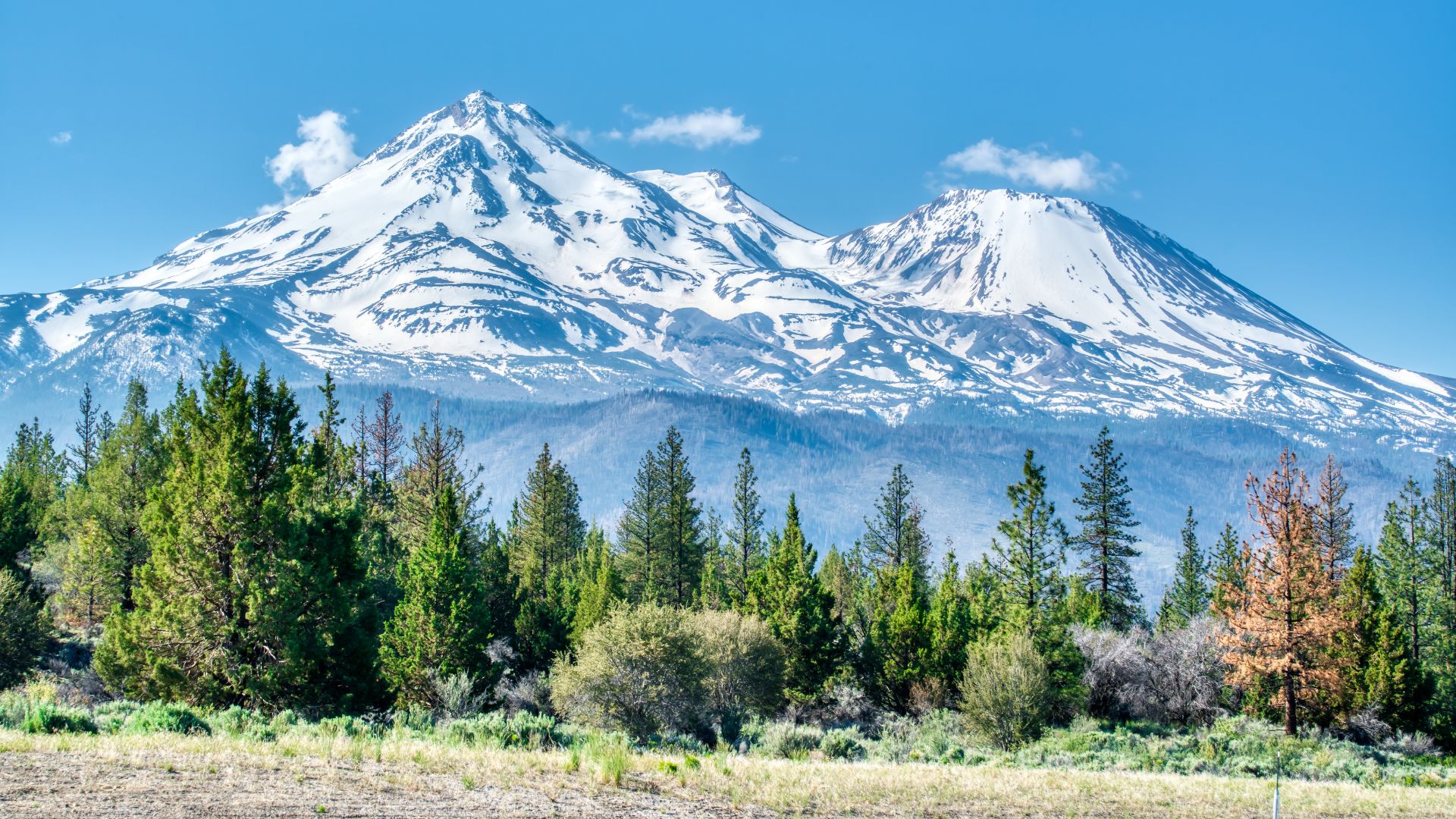
Lassen Volcanic National Park’s Volcanic Marvels
Lassen Volcanic National Park guards an active volcanic landscape in the southern Cascades.
All four volcano types on Earth show up here, which still blows my mind a bit.
Lassen Peak last erupted between 1914 and 1917. That’s pretty recent if you think about it.
Volcanic Features I Explore:
- Cinder Cone: Classic, picture-perfect volcano
- Shield Volcanoes: Broad, gentle giants
- Composite Volcanoes: Steep, dramatic peaks
- Plug Dome: Lassen Peak itself
The park sits right on the Ring of Fire, so magma bubbles away below the surface.
I spot steam vents, hot springs, and bubbling mud pots all over—reminders that this place is still alive.
A 30-mile scenic drive links up the big volcanic sights. Usually, you can make the full loop between late May and October.
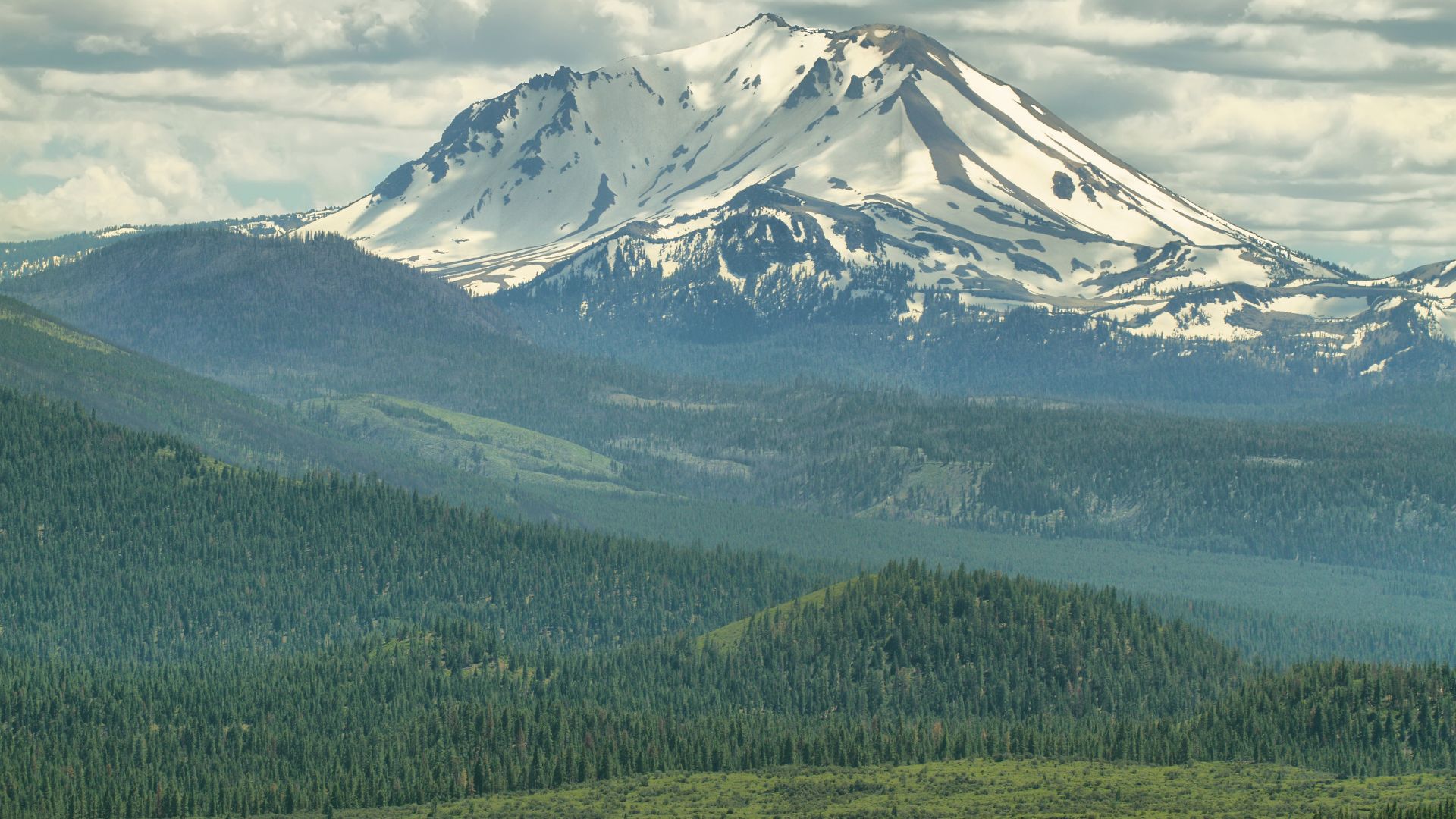
Bumpass Hell and Lassen Peak Adventures
Bumpass Hell is the park’s biggest hydrothermal area, a steamy, otherworldly basin stretching across 16 acres.
You reach it via a 3-mile roundtrip hike from the scenic drive. Boardwalks wind through the bubbling landscape, keeping you (and the fragile features) safe.
What I See at Bumpass Hell:
- Boiling springs around 200°F
- Sulfur-stained rocks that almost glow
- Steam vents hissing volcanic gases
- Bubbling mud pots gurgling away
Lassen Peak itself offers a tougher challenge. A 5-mile roundtrip hike climbs 2,000 feet up to the 10,457-foot summit.
If you want to tackle it, start early—the trail’s exposed, rocky, and shade is rare.
The summit view? On a clear day, you’ll spot Mount Shasta to the north, plus the Coast Range and Sierra Nevada.
Don’t forget the basics here: water, sunblock, and real hiking boots. You’ll need them.
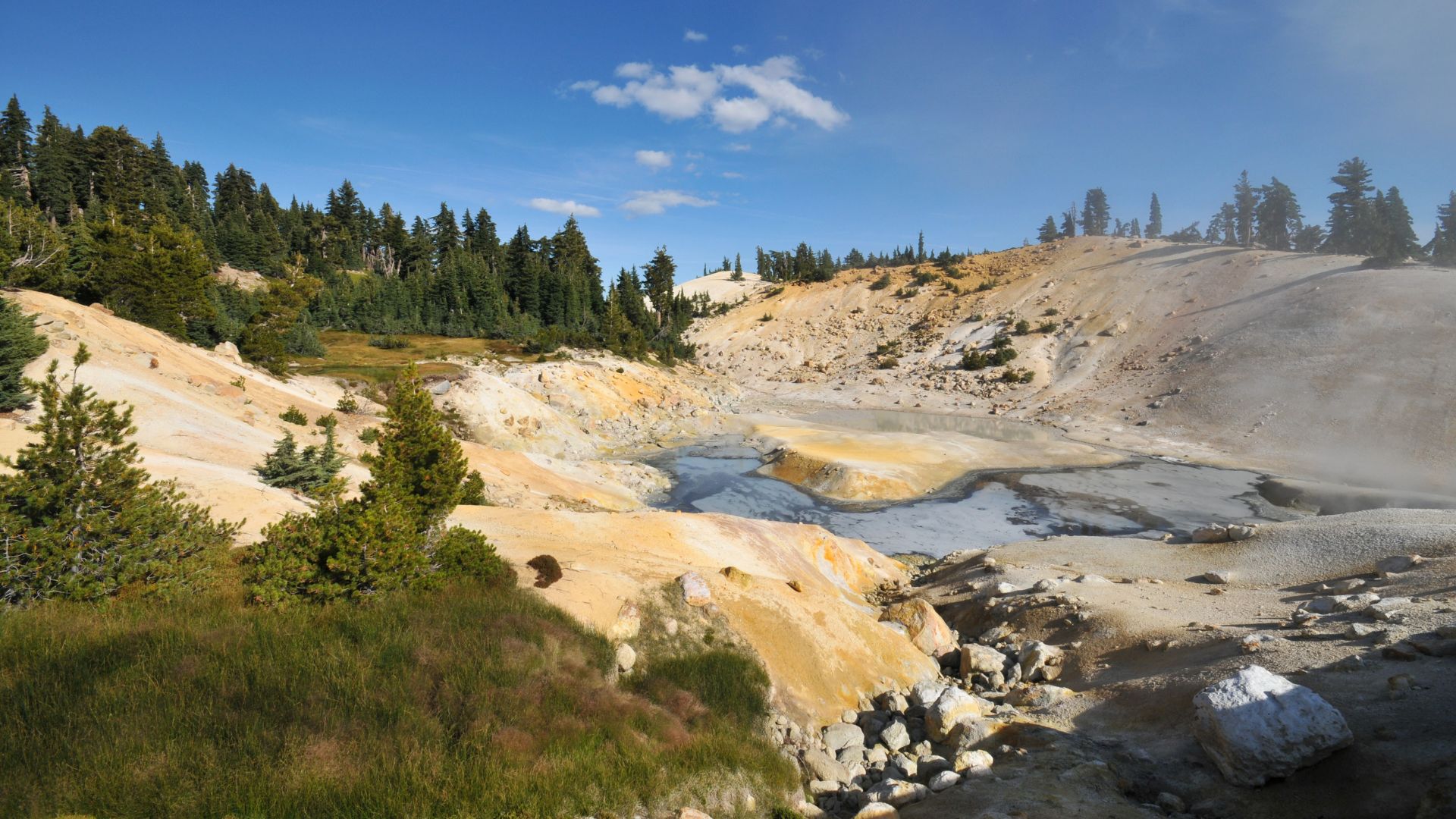
Waterfalls, Lakes, and Scenic Waterways
The Shasta Cascade region doesn’t mess around when it comes to water.
We’re talking the legendary 129-foot Burney Falls, the wide-open waters of Lake Shasta, and everything in between.
Whether you want to chill by a lake, hike to a thunderous waterfall, or try houseboating, this place has you covered.
McArthur–Burney Falls Memorial State Park’s Burney Falls
Burney Falls is hands-down my favorite NorCal waterfall.
This 129-foot beauty got called the “Eighth Wonder of the World” by President Theodore Roosevelt, and after seeing it, I’m not about to argue.
Over 100 million gallons of water pour over the falls every day, thanks to underground springs that keep it flowing even when everything else dries up.
What makes Burney Falls special:
- Water spills from mossy volcanic rock
- Multiple viewpoints along a 1.2-mile loop trail
- Brisk swimming in the pool below (if you’re brave)
- Picnic spots and camping in the park
It takes about 15 minutes to walk down to the base. Seriously, bring your camera—the mist makes rainbows and everything just pops in photos.
McArthur–Burney Falls Memorial State Park also lets you fish in Burney Creek. The park sits right between Lassen Peak and Mount Shasta, so it’s a perfect pit stop on a longer road trip.
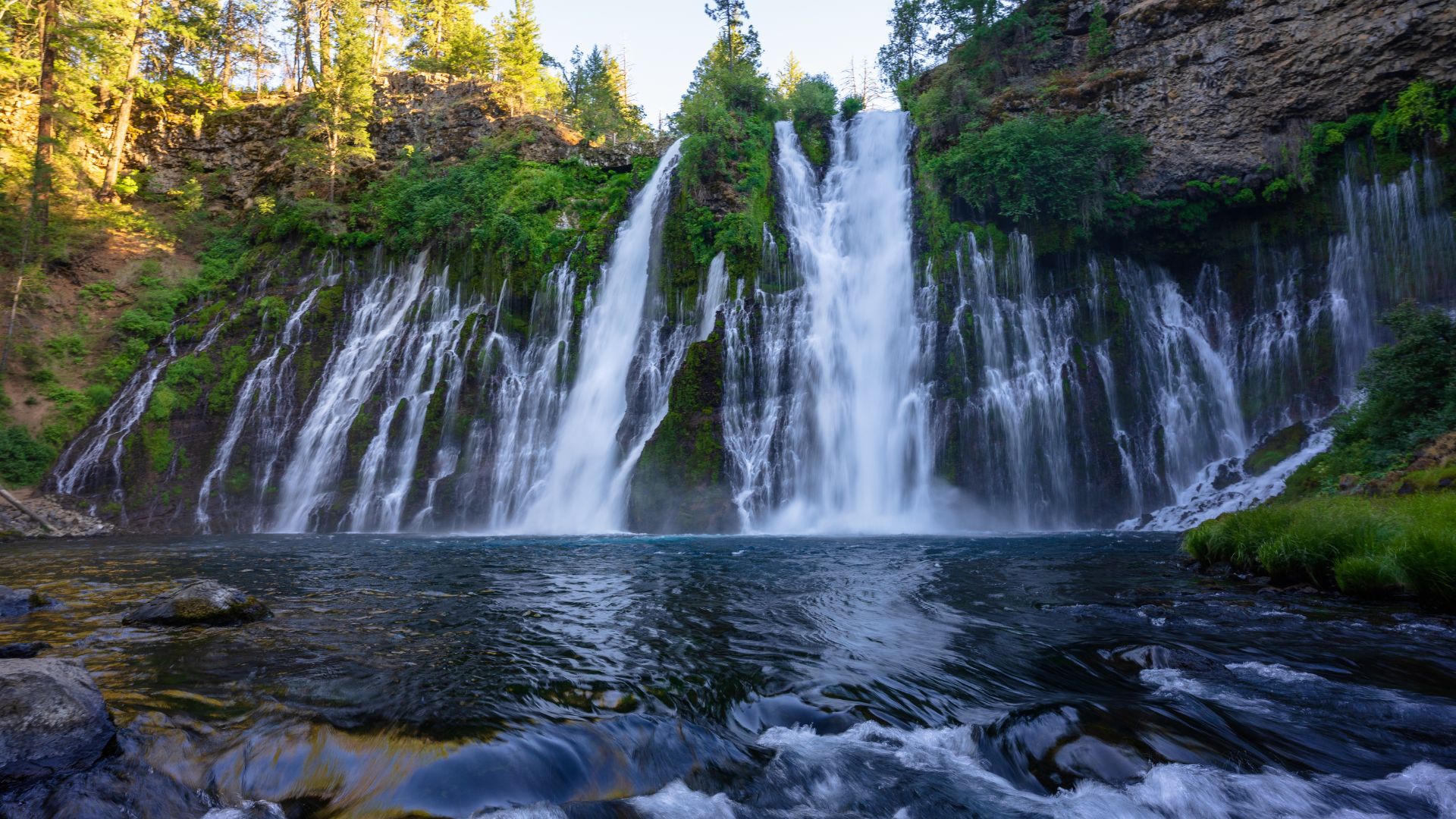
Whiskeytown Lake and Whiskeytown Falls Escape
Whiskeytown Lake spreads across 3,200 acres in Whiskeytown National Recreation Area.
The water’s clear, perfect for swimming, kayaking, or just floating on your back.
I love how you can mix up lake days with waterfall hikes here.
Whiskeytown Falls needs a moderate 3.4-mile round-trip hike through oak woods, but the payoff is a 220-foot cascade that’s strongest in spring and early summer.
Lake activities include:
- Swimming at Oak Bottom Beach
- Kayak and paddleboard rentals
- Fishing for bass and trout
- Scuba diving (yep, really)
Camping’s available at Oak Bottom Campground. If you swing by in late spring, wildflowers line the trails and the water’s at its best.
Exploring Lake Shasta and Houseboating Adventures
Lake Shasta, at full pool, covers 30,000 acres and claims the title of California’s biggest reservoir.
With 370 miles of shoreline, there’s always a quiet cove or hidden inlet to discover.
Houseboating here is a blast. Renting one lets you reach places you’d never get to by car, and I’ve found it’s the ultimate way to unplug for a few days.
Houseboat rental options:
- 3-day weekends or week-long getaways
- Boats for groups of 8–22
- Full kitchens and bathrooms (no roughing it required)
Waterfall hikes connect to the lake, like the Little Backbone Creek natural waterslide—a smooth rock chute that’s basically a natural water park.
Fishing is solid here, with bass, trout, and salmon ready for the taking. Even in summer, it’s easy to find a peaceful spot.
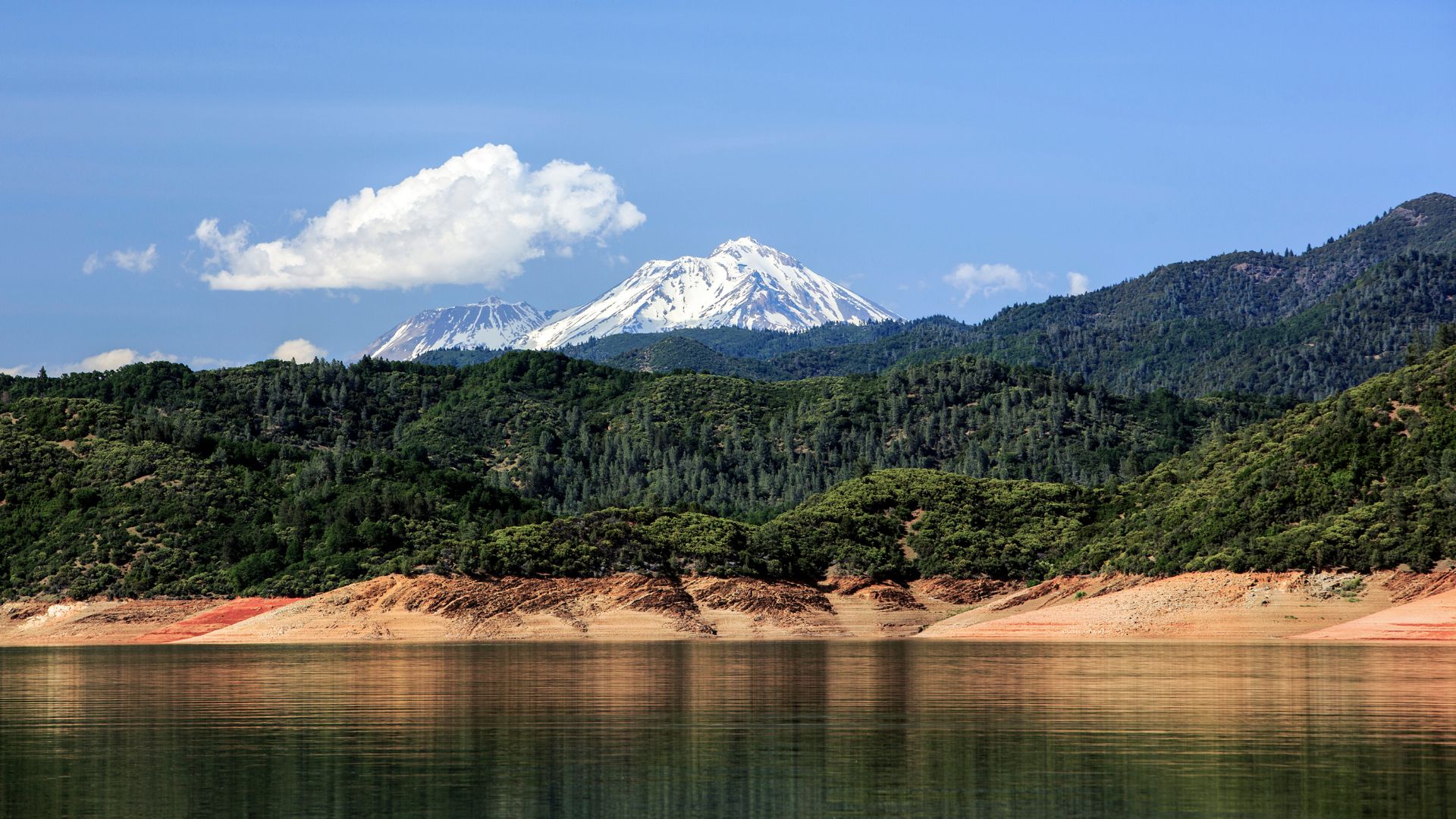
Manzanita Lake and Table Mountain Serenity
Manzanita Lake sits high at 5,890 feet in Lassen Volcanic National Park.
On calm mornings, the lake reflects Lassen Peak perfectly—one of those scenes you just want to bottle up.
A 1.6-mile trail circles the lake, staying flat and easy. Early mornings are best for wildlife and fewer people.
Lake features:
- No swimming (protected watershed)
- Kayaking and canoeing welcome
- Excellent trout fishing
- Campground close by
Table Mountain rises nearby and offers sweeping views of the volcanic landscape. The lake’s calm and the mountain’s drama make for killer photos.
When winter hits, snow blankets the area, but you can still get out there—cross-country skiing and snowshoeing take over the trails.
Caves, Forests, and Unique Ecosystems
The Shasta Cascade region hides some of California’s coolest underground worlds and unspoiled forests.
Ancient caves and dense woods create habitats for rare wildlife and weird geological features you won’t find anywhere else.
Lake Shasta Caverns: Hidden Underground Wonders
Out of all the caves I’ve wandered, Lake Shasta Caverns might be California’s most jaw-dropping.
Formed over 250 million years ago, these caverns perch 900 feet above Shasta Lake.
Getting there is half the fun—a boat ride across the lake, then a bus up the mountain to the entrance. The whole experience takes about two hours.
Inside, it’s a constant 58 degrees, which feels great on a hot day. The caverns show off 38 different formations: stalactites, stalagmites, and limestone drapes. You can even spot ancient fossils from the Jurassic era.
Key Cave Features:
- Eight known chambers
- Discovery Room with interactive stuff for kids (and adults)
- 300-foot manmade entrance tunnel
- About 600 steps on the tour
Guided tours last 45–60 minutes. You’ll walk through several chambers and see formations that took eons to form.
Tickets run $26 for adults and $15 for kids (3–15). Buy ahead online—they do sell out.
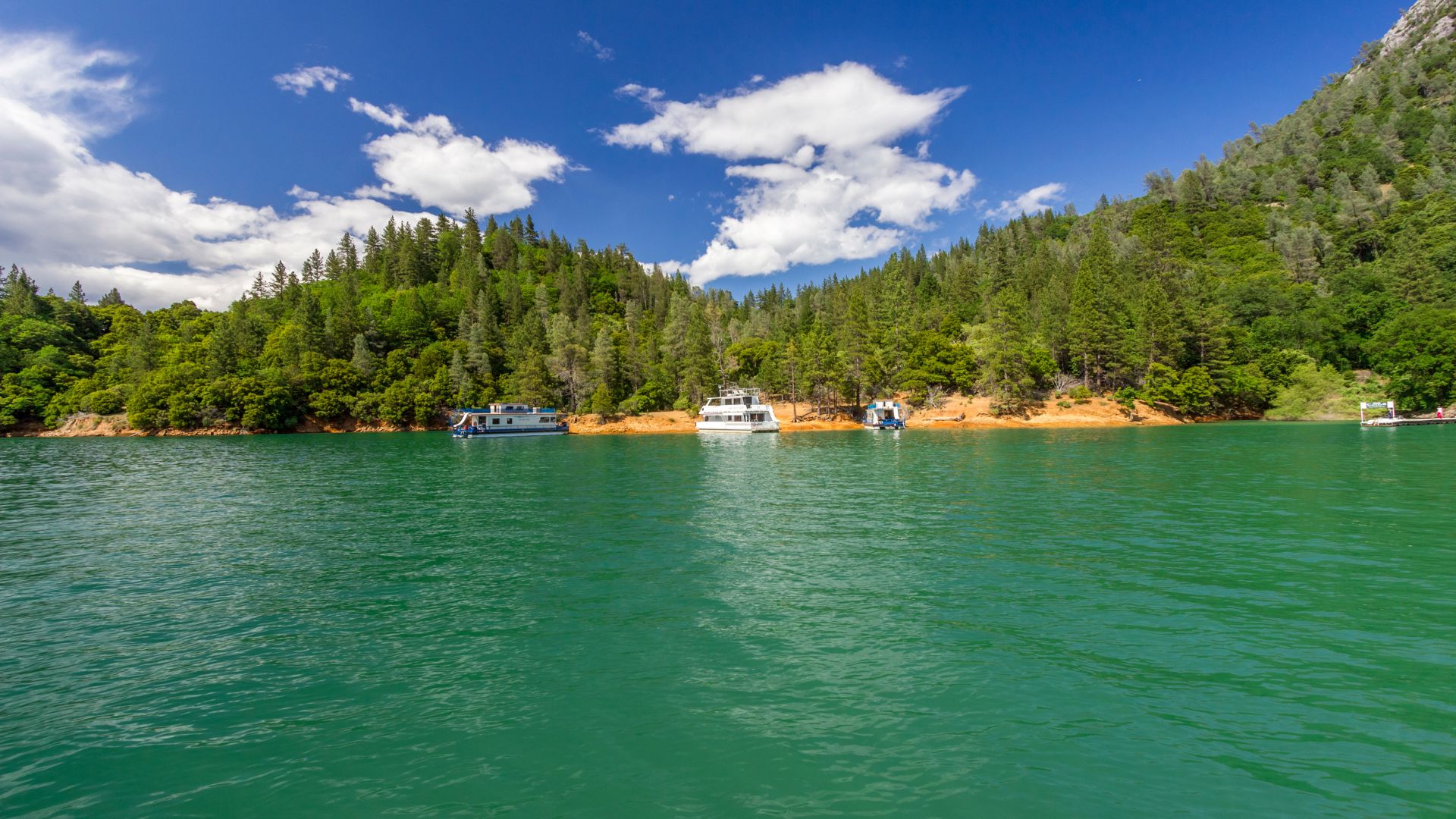
Klamath National Forest’s Pristine Wilderness
Klamath National Forest sprawls across 1.7 million acres in northern California and southern Oregon.
It’s one of the most varied ecosystems in the West, with five wilderness areas and more than 200 miles of trails.
Old-growth forests here have trees over 1,000 years old. Douglas fir, ponderosa pine, and incense cedar fill the air with that unmistakable forest smell.
Wildlife is everywhere—black bears, mountain lions, and more than 200 bird species. Some rare plants only grow in these mountains.
Forest Highlights:
- Marble Mountain Wilderness: 242,000 acres and alpine lakes
- Russian Wilderness: 12,000 acres of granite peaks
- Red Buttes Wilderness: 20,000 acres straddling the Oregon border
The Klamath Mountains are older than the Sierra Nevada, which lets unique plants survive here since the ice age.
Fishing is top-notch, especially with salmon and steelhead runs in the Klamath River. You can also hunt, camp, or just wander—there’s something for every skill level.
Lava Beds National Monument Exploration
Lava Beds National Monument packs in over 800 caves, all carved by ancient volcanic eruptions.
These lava tube caves are a totally different vibe from limestone caverns.
The monument sits in the Cascades, where past eruptions shaped these tunnels. Most caves stay cool year-round—perfect for a summer adventure.
Cave Types Available:
- Mushpot Cave: Lit up and super beginner-friendly
- Skull Cave: Huge chamber with permanent ice
- Catacombs Cave: Tight passages for the brave
You can explore many caves solo with a flashlight. The monument hands out maps and safety tips, and some caves need a free permit.
Above ground, sagebrush steppe takes over. Wildlife here is different—think mule deer, coyotes, and loads of birds.
The area also played a big role in the Modoc War of 1872–1873, so there’s a layer of Native American history woven into the landscape.
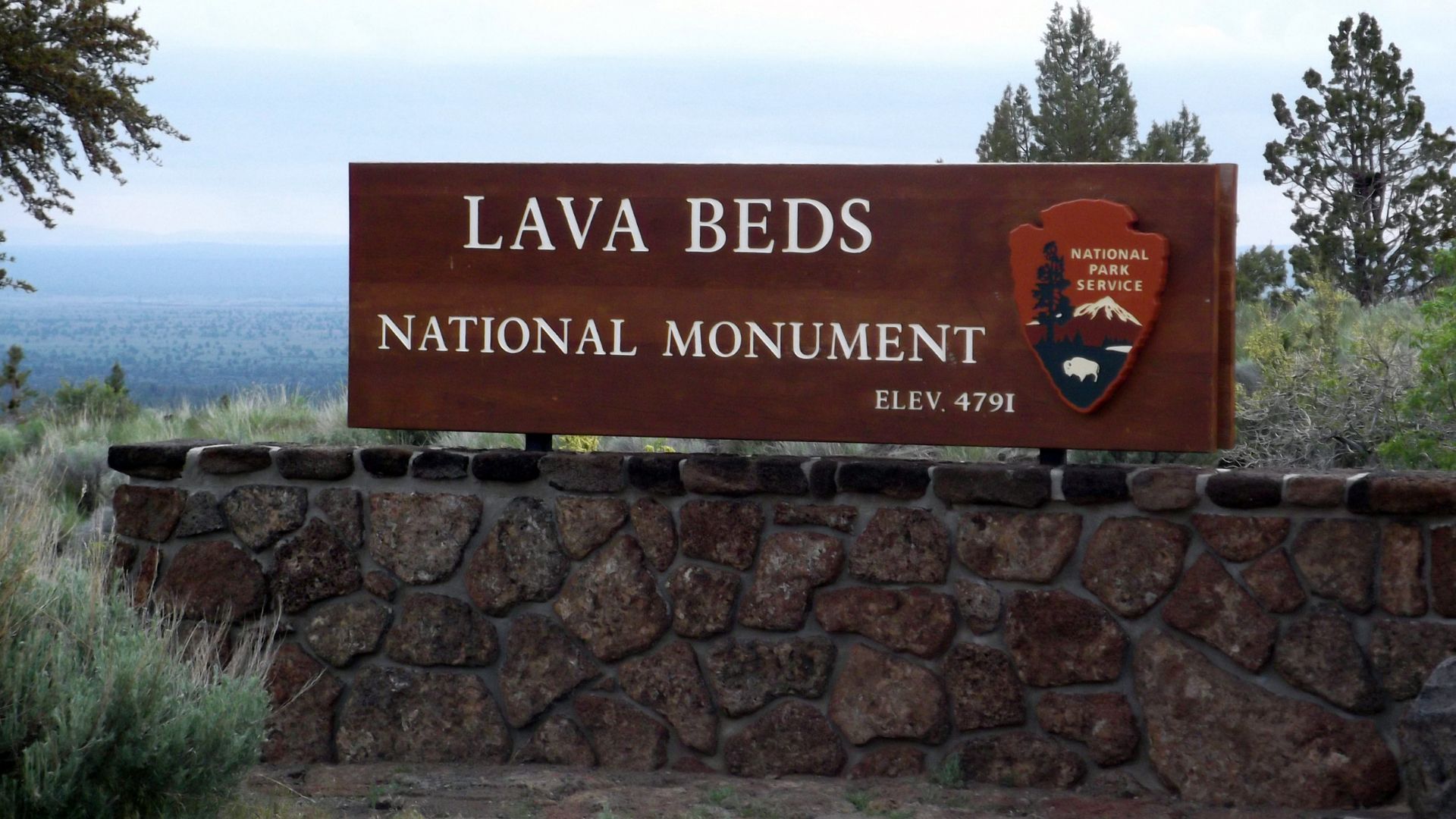
Adventures in Hiking, Trails, and Outdoor Activities
The Shasta Cascade region is a dream for hikers and outdoor lovers.
You’ve got everything from the famous Pacific Crest Trail to peaceful river paths along the Sacramento. It’s a place where you can hike wildflower meadows, fish quiet streams, and camp under a sky full of stars.
Pacific Crest Trail & Sacramento River Trail Experiences
The Pacific Crest Trail has given me some of my favorite hiking moments in Northern California. This legendary trail winds through the Shasta Cascade region, delivering jaw-dropping views of Mount Shasta.
If you’re looking for an easy way to hop onto the PCT, I’d say start at Castle Lake. The trail meanders through pine forests and open alpine meadows. You’ll bump into crystal-clear mountain lakes and those dramatic volcanic peaks that just demand a photo or two.
The Sacramento River Trail feels totally different. It’s a paved path that hugs the river right near Redding. Whether you’re in the mood for a walk, a bike ride, or just want an easy hike, this trail’s got you covered.
Trail Highlights:
- Pacific Crest Trail: Over 15 miles of accessible sections
- Sacramento River Trail: 17 miles of smooth, paved paths
- Castle Lake Trail: 1-mile round trip to a peaceful alpine lake
I’ve spotted deer, river otters, and a surprising number of birds along the river trail. It connects a bunch of parks and offers some of the best wildlife viewing in the area.
Fishing, Camping, and Wildflower Blooms
Shasta Lake has never let me down when it comes to fishing. I’ve pulled in rainbow trout, brown trout, and bass here—sometimes all in one weekend. The Trinity River’s also a gem for trout, whether you’re into fly fishing or just want to cast a simple spinner.
Come spring, wildflowers start showing off everywhere. The Table Mountain area bursts into color from March through May. If you’re camping, the blooms just make everything feel extra magical.
Best Camping Spots:
- Castle Crags State Park
- Shasta Lake campgrounds
- Trinity River areas
Castle Crags State Park is one of my top picks for camping in California. You get hiking trails, rock climbing, and swimming holes all in one place. The granite spires towering above the campground always impress me.
Camping along the Trinity River means you can fish in the morning and hike in the afternoon. The river holds rainbow, brown, and even golden trout.
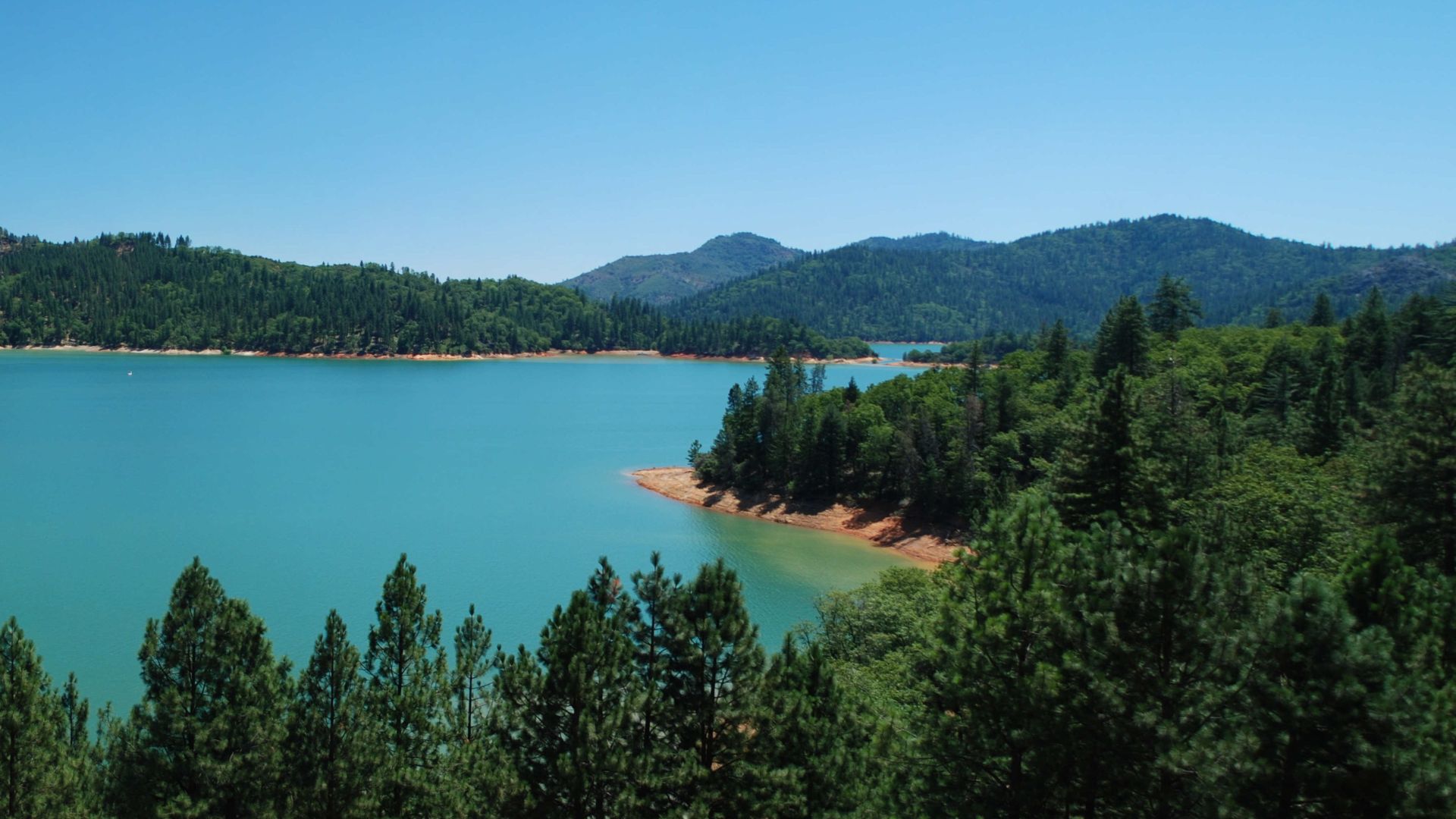
Quaint Towns, Bridges, and Cultural Landmarks
The Shasta Cascade region is full of charming small towns, Gold Rush history, and quirky landmarks. You’ll find architectural icons like the Sundial Bridge and waterfalls that beg for a detour.
Redding, Sundial Bridge, and Turtle Bay Exploration Park
Redding is basically the launchpad for Northern California’s outdoor adventures. The city hugs the Sacramento River and gives you quick access to all kinds of recreation.
The Sundial Bridge is Redding’s showstopper. This 700-foot pedestrian bridge, designed by Santiago Calatrava, stretches across the river with a glass deck that lets you look straight down to the water.
I’m always a little awestruck by the bridge’s sundial design. The 217-foot tower actually works as a sundial, casting dramatic shadows on the north side.
Turtle Bay Exploration Park sits right at the bridge’s edge. This 300-acre park includes:
- A natural history museum with hands-on exhibits
- Botanical gardens packed with native plants
- Miles of riverfront walking trails
- Wildlife viewing spots
The park runs programs about local ecosystems. If you’re in Redding, spend at least half a day wandering both the bridge and the park.
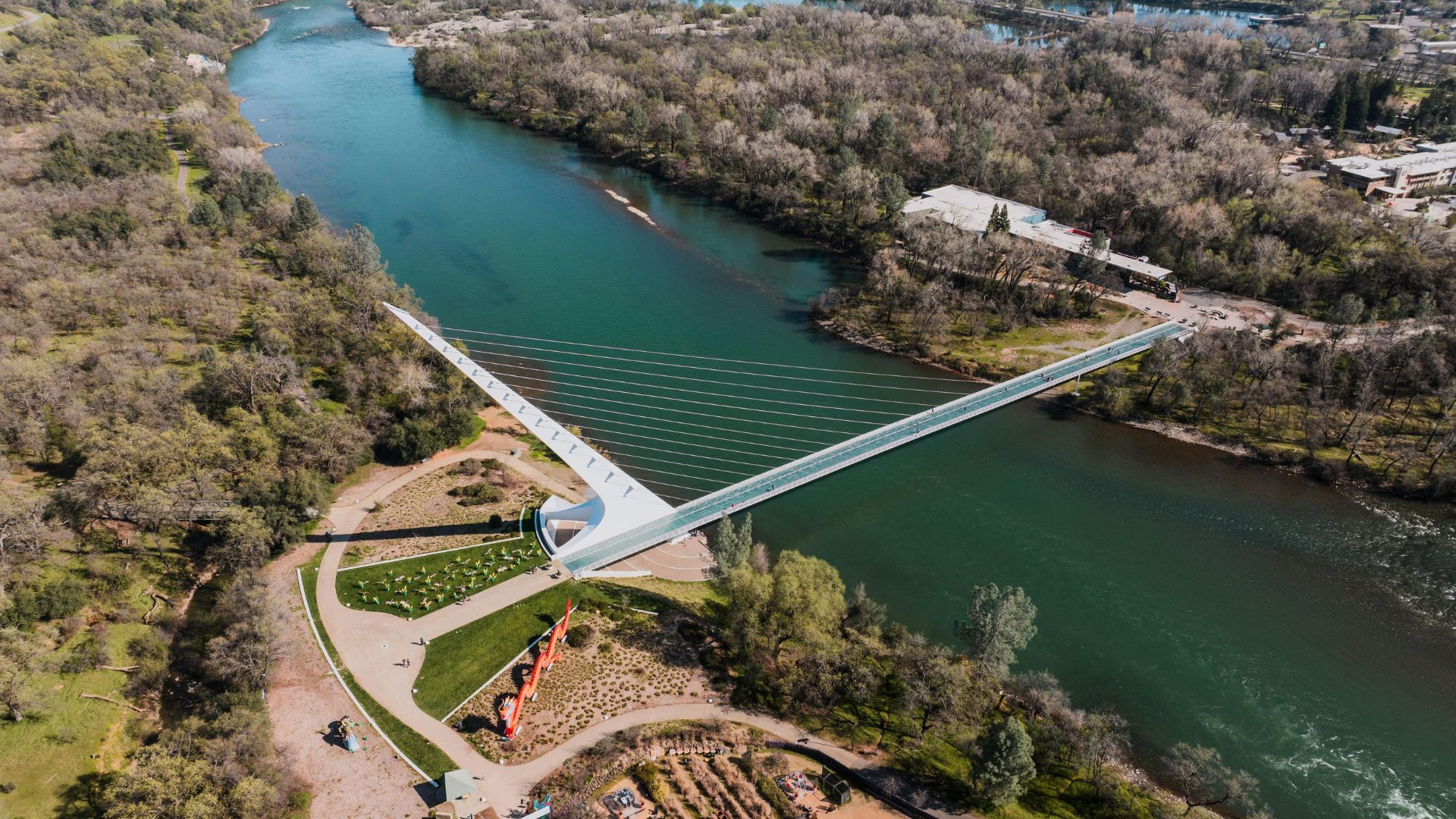
Historic Gold Rush Towns and Yreka
Yreka keeps Gold Rush history alive. This little town, about three hours north of Sacramento, still has a lot of its original charm.
Gold miners founded the town in 1851 after striking it rich nearby. Within months, over 2,000 miners had set up camp during the boom.
Historic downtown Yreka is lined with buildings from the mining days. The Siskiyou County Museum displays Gold Rush artifacts and stories. I love strolling through the district, checking out the old storefronts and mining gear.
Supposedly, Mark Twain said the town’s name came from a misspelling of “bakery.” Local shops still sell items connected to the mining past.
Other Gold Rush towns dot the region, each with preserved buildings and small museums that give you a peek into early California life.
Dunsmuir’s Scenic Charm & Hedge Creek Falls
Dunsmuir feels frozen in time, like you’ve wandered into the 1920s. The railroad town sits along the Upper Sacramento River, just south of Mount Shasta.
Locals call it the “Home of the Best Water on Earth.” The river’s so clean that fly fishers travel from all over for wild trout.
Hedge Creek Falls is a quick trip from town and rewards you with a 30-foot waterfall dropping into a mossy pool. You can actually walk behind the falls—it’s a great spot for photos.
Downtown Dunsmuir is full of historic buildings and colorful murals. You’ll find cozy restaurants and the Dunsmuir Brewery Works, which pours local beer in a building that feels straight out of another era.
Vintage train cars and the old depot keep the railroad vibe alive. Every so often, a steam locomotive rolls through town, adding to the nostalgia.
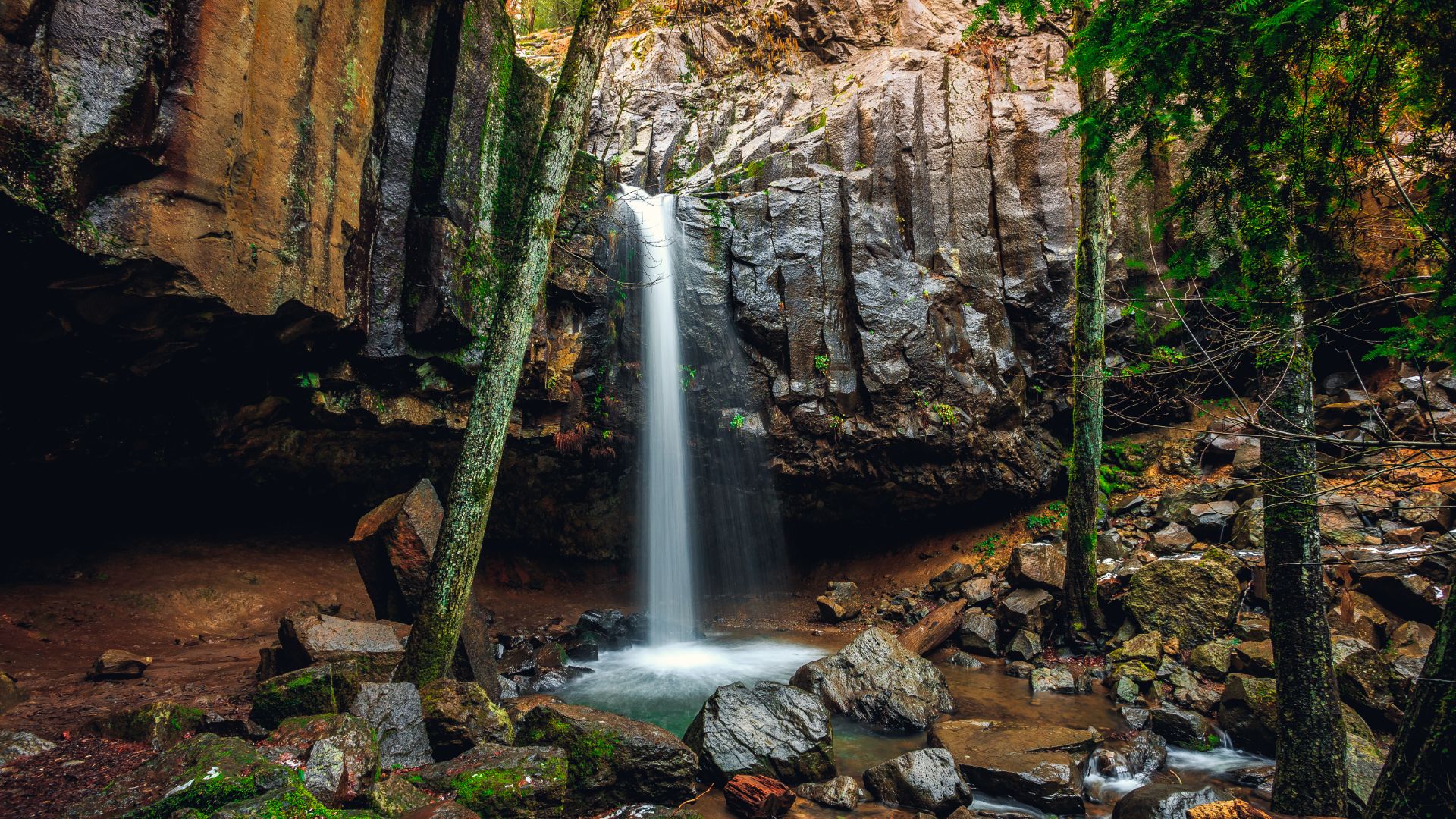
Exploring the Shasta Cascade Region and North Coast
The Shasta Cascade region stretches from volcanic peaks to sparkling lakes, while the North Coast delivers rugged coastlines and forests of towering redwoods. Both areas offer a crazy amount of variety for anyone who loves the outdoors.
Overview of the Shasta Cascade Region’s Diversity
The Shasta Cascade region sits tucked in California’s northeast corner, running from the Oregon border down toward Sacramento. It’s named for the Cascade Mountains and the iconic Mount Shasta, which rises 14,180 feet and dominates the skyline.
I’ve noticed four main landscapes here:
- Volcanic features like Mount Shasta and Lassen Volcanic National Park
- Clear mountain lakes for houseboating and fishing
- Dense forests with endless trails for hiking and biking
- River systems such as the Sacramento River and its many branches
Friendly towns like Chico and McCloud make great stops, and Redding is the largest city—perfect for launching your adventure.
Lassen Volcanic National Park really stands out. The park bubbles with geothermal spots, mud pots, and hot springs.
You’ll also find rural farms scattered near the Upper Sacramento River. These working farms give visitors a chance to see California’s agricultural side up close.
North Coast’s Rugged Beauty
California’s North Coast stretches from the San Francisco Bay Area all the way up to the Oregon border. Honestly, I don’t think I’ve seen scenery quite this dramatic anywhere else in the state.
The Pacific Ocean hammers the steep cliffs and rocky headlands, sometimes so loud you can’t hear yourself think. Fog creeps in unexpectedly, shifting the whole vibe and making the views feel a bit mysterious, almost haunting.
Redwood forests spread out over much of the inland terrain. Walking among these ancient giants, you realize some of them are the tallest living things on the planet. State and national parks protect many of these magical groves.
Along the coastline, you’ll find:
- Rugged headlands that open up to sweeping ocean panoramas
- Hidden beaches you can only reach by hiking down steep, winding trails
- Coastal rivers carving their way through deep, wild canyons
- Tide pools packed with strange and beautiful marine life
Small towns like Mendocino and Eureka pop up along the route, each with its own quirky charm. I love wandering through their streets, where you’ll spot Victorian architecture and stumble across seafood spots serving up the local catch.
Thanks to the ocean breeze, the weather never really heats up—even in July, I usually end up throwing on a sweater. Layers are your best friend up here.

